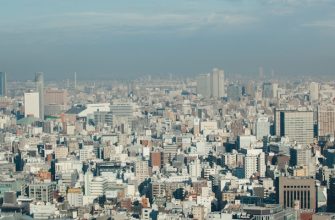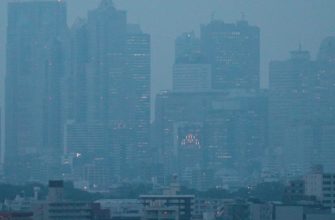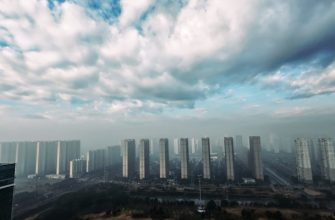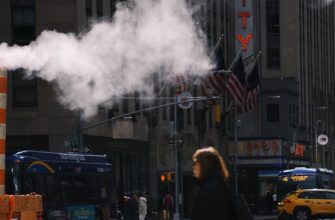- The Hidden Dangers: Air Pollution and Urban Health
- Breathing in the Concrete: How Megacity Air Quality Impacts Daily Life
- From Smog to Sickness: Understanding Airborne Risks in Urban Areas
- The Silent Epidemic: Respiratory Diseases in City Dwellers
- Greener Cities: Solutions to Combat Urban Air Pollution
- Living in a Bubble: The Psychological Effects of Urban Air Quality
The Hidden Dangers: Air Pollution and Urban Health
Air pollution in megacities is a pressing issue that poses significant risks to urban health. The quality of the air in densely populated areas can be severely compromised by various pollutants, leading to numerous health challenges for residents. Understanding the hidden dangers of air pollution is crucial for urban dwellers who face these daily threats.
Major sources of air pollution in urban environments include:
- Vehicle emissions from cars and trucks
- Industrial discharges from factories
- Construction activities that generate dust
- Combustion of fossil fuels for energy
- Use of household products that release volatile organic compounds
The impact of air pollution on health can manifest in various ways. Short-term exposure can lead to:
- Respiratory issues, such as asthma and bronchitis
- Eye irritation and skin problems
- Increased risk of cardiovascular events
Long-term exposure to polluted air can result in more severe health consequences, including:
- Chronic obstructive pulmonary disease (COPD)
- Lung cancer
- Premature death due to heart diseases
To mitigate the effects of air pollution on urban health, it is essential to implement and support various strategies. These may include:
- Promoting public transportation to reduce vehicle emissions
- Encouraging the use of renewable energy sources
- Implementing stricter regulations on industrial emissions
- Raising awareness about the importance of air quality
In summary, air pollution in megacities represents a significant threat to the health of urban residents. Addressing the hidden dangers associated with poor air quality requires collective efforts from individuals, communities, and policymakers. Only through concerted actions can the adverse health impacts of air pollution be minimized, ensuring a healthier environment for future generations.
Breathing in the Concrete: How Megacity Air Quality Impacts Daily Life
In megacities, the quality of air plays a crucial role in determining the overall health of residents. Urban environments are often characterized by high levels of pollution, which can have detrimental effects on daily life. The air in these bustling metropolises contains various pollutants, including particulate matter, nitrogen dioxide, and carbon monoxide, all of which can contribute to serious health issues.
- Respiratory problems: Residents frequently experience respiratory conditions such as asthma and chronic bronchitis due to poor air quality.
- Cardiovascular diseases: Prolonged exposure to polluted air can lead to heart problems, including hypertension and heart attacks.
- Impact on mental health: Studies indicate that living in polluted environments can exacerbate stress and anxiety levels, affecting mental well-being.
- Children’s health: Youngsters are particularly vulnerable; exposure to polluted air can hinder lung development and lead to long-term health complications.
Moreover, the effects of air quality extend beyond physical health. The daily routine of individuals living in megacities is often influenced by their environment. For instance, high pollution levels can limit outdoor activities, resulting in a sedentary lifestyle. This, in turn, can lead to obesity and other lifestyle-related diseases.
Efforts to improve air quality in megacities are essential for enhancing the quality of life. Initiatives such as increasing green spaces, promoting public transportation, and regulating industrial emissions can significantly reduce air pollution. By fostering a cleaner atmosphere, megacities can better support the health and well-being of their residents.
From Smog to Sickness: Understanding Airborne Risks in Urban Areas
Urban areas are often characterized by high levels of pollution, primarily due to industrial activities, vehicular emissions, and construction projects. This smog not only deteriorates air quality but also poses significant health risks to residents. Understanding the airborne dangers associated with urban living is essential for promoting public health and awareness.
Airborne pollutants in megacities can lead to a myriad of health issues. The most common health concerns linked to poor air quality include:
- Respiratory Diseases: Chronic conditions such as asthma and chronic obstructive pulmonary disease (COPD) are exacerbated by exposure to polluted air.
- Cardiovascular Problems: Fine particulate matter (PM2.5) can penetrate the bloodstream, leading to heart attacks and other cardiovascular diseases.
- Neurological Effects: Emerging research suggests that air pollution may contribute to cognitive decline and increase the risk of neurodegenerative diseases.
- Reproductive Issues: Pregnant women exposed to high levels of air pollution may face complications such as low birth weight and preterm delivery.
- Increased Mortality Rates: Long-term exposure to polluted air is linked to higher rates of premature death.
Addressing air quality in megacities requires a multifaceted approach. Solutions can include:
- Implementing stricter emissions regulations for industries and vehicles.
- Promoting public transportation and alternative modes of transport to reduce traffic congestion.
- Encouraging the use of green spaces to improve urban air quality.
- Raising public awareness about the importance of air quality and its impact on health.
In conclusion, the link between urban air quality and health is undeniable. As cities continue to grow, prioritizing clean air initiatives is critical in safeguarding the well-being of residents. Understanding and addressing the airborne risks associated with urban living is essential for fostering healthier communities.
The Silent Epidemic: Respiratory Diseases in City Dwellers
In the bustling environment of megacities, the air quality significantly impacts the health of urban residents, leading to a range of respiratory diseases. The phenomenon, often referred to as a silent epidemic, poses serious health risks that are frequently overlooked. High levels of pollutants, including particulate matter (PM), nitrogen dioxide (NO2), and sulfur dioxide (SO2), are prevalent in urban areas, contributing to a multitude of respiratory issues.
Respiratory ailments such as asthma, chronic bronchitis, and other chronic obstructive pulmonary diseases (COPD) have been on the rise among city dwellers. Studies indicate that exposure to polluted air can exacerbate existing conditions and even lead to the development of new respiratory illnesses. The long-term effects of breathing in contaminated air can be devastating, diminishing quality of life and increasing healthcare costs.
- Asthma: A chronic condition that affects the airways, often triggered by air pollution.
- Chronic Bronchitis: Inflammation of the bronchial tubes, leading to persistent cough and mucus production.
- COPD: A group of lung diseases that obstruct airflow, making it difficult to breathe.
- Allergic Reactions: Airborne pollutants can aggravate allergies, leading to respiratory distress.
- Reduced Lung Function: Prolonged exposure to polluted air can impair lung development and function.
Urban residents are increasingly susceptible to these health challenges, as the city environment presents unique factors that exacerbate respiratory diseases. The density of traffic, industrial activity, and construction work contribute to the accumulation of harmful substances in the air. Furthermore, weather conditions can influence the dispersion of pollutants, trapping them in urban canyons and elevating their concentration.
Addressing the silent epidemic of respiratory diseases in megacities requires a multifaceted approach. Urban planning that prioritizes green spaces, improved public transportation, and stricter emissions regulations can play a crucial role in enhancing air quality. In addition, public health campaigns aimed at raising awareness about the dangers of air pollution can empower residents to take proactive measures to protect their health.
Ultimately, the health of city dwellers hinges on a collective effort to mitigate the effects of air pollution, ensuring that the urban jungle becomes a healthier place to live. By prioritizing clean air initiatives and fostering a culture of health consciousness, it is possible to combat the alarming rise of respiratory diseases linked to urban living.
Greener Cities: Solutions to Combat Urban Air Pollution
The challenge of urban air pollution in megacities has become a pressing concern for public health and environmental sustainability. Greener cities are emerging as vital solutions to combat this pervasive issue. Innovative strategies and technologies are being implemented to reduce air pollution and enhance the quality of life for urban residents.
- Urban Green Spaces: Increasing the number of parks, gardens, and green rooftops can significantly improve air quality. These spaces absorb carbon dioxide and release oxygen, creating a healthier environment.
- Tree Planting Initiatives: Planting trees along streets and in urban areas serves as a natural filter for pollutants. Trees capture dust, smoke, and other harmful particulates, mitigating the effects of air pollution.
- Promotion of Public Transport: Expanding and improving public transportation systems can reduce reliance on personal vehicles, leading to fewer emissions. Encouraging the use of buses, trams, and trains is essential for cleaner air.
- Implementation of Low Emission Zones: Designating areas where high-pollution vehicles are restricted can lead to significant reductions in harmful emissions. Such zones promote the use of electric and hybrid vehicles.
- Smart Technology: Utilizing smart sensors to monitor air quality in real-time can help cities respond quickly to pollution spikes. Data-driven solutions can inform policy changes and public awareness campaigns.
These solutions contribute not only to improved air quality but also to the overall well-being of city residents. Greener cities foster healthier lifestyles, encourage outdoor activities, and promote community engagement. By prioritizing sustainable practices, urban centers can transform into cleaner, healthier environments for all inhabitants.
Living in a Bubble: The Psychological Effects of Urban Air Quality
Living in megacities often leads to unique psychological challenges, particularly due to the detrimental effects of poor urban air quality. The atmosphere in these bustling environments is frequently laden with pollutants that not only affect physical health but also have significant implications for mental well-being.
Research indicates that individuals residing in areas with high levels of air pollution may experience increased stress and anxiety. The constant exposure to harmful particles can create a sense of unease, leading to what many describe as living in a bubble, where the outside environment feels hostile and threatening.
- Increased Stress Levels: Polluted air can elevate cortisol levels, contributing to heightened stress responses.
- Anxiety and Mood Disorders: Studies show a correlation between poor air quality and the prevalence of anxiety disorders among urban dwellers.
- Reduced Cognitive Function: Exposure to air pollutants can impair cognitive abilities, affecting decision-making and emotional regulation.
- Social Isolation: The psychological burden of poor air quality can lead to withdrawal from social interactions, further exacerbating feelings of loneliness.
The impact of urban air quality extends beyond physical ailments. It shapes the psychological landscape of city life, influencing how residents perceive their environment and interact with one another. The mental repercussions of prolonged exposure to air pollution can create a cycle of health issues, where the effects of poor air quality feed into psychological distress, leading to a decline in overall life satisfaction.
In conclusion, the interplay between urban air quality and psychological health cannot be overlooked. Understanding these effects is crucial for developing effective strategies to mitigate the impact of pollution and promote a healthier urban environment. Addressing air quality issues will not only improve physical health but also enhance the mental well-being of urban residents, fostering a more vibrant and connected community.








